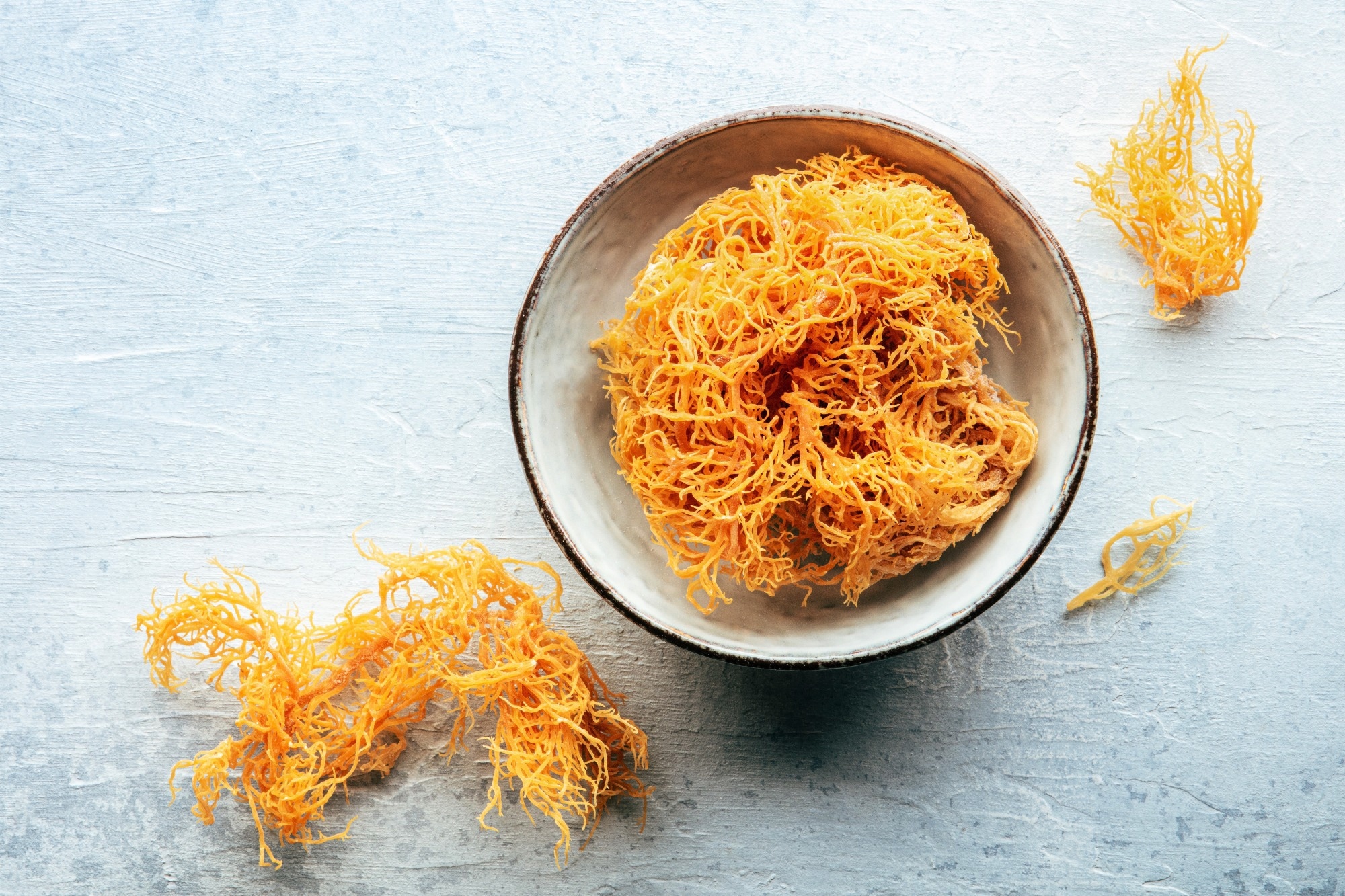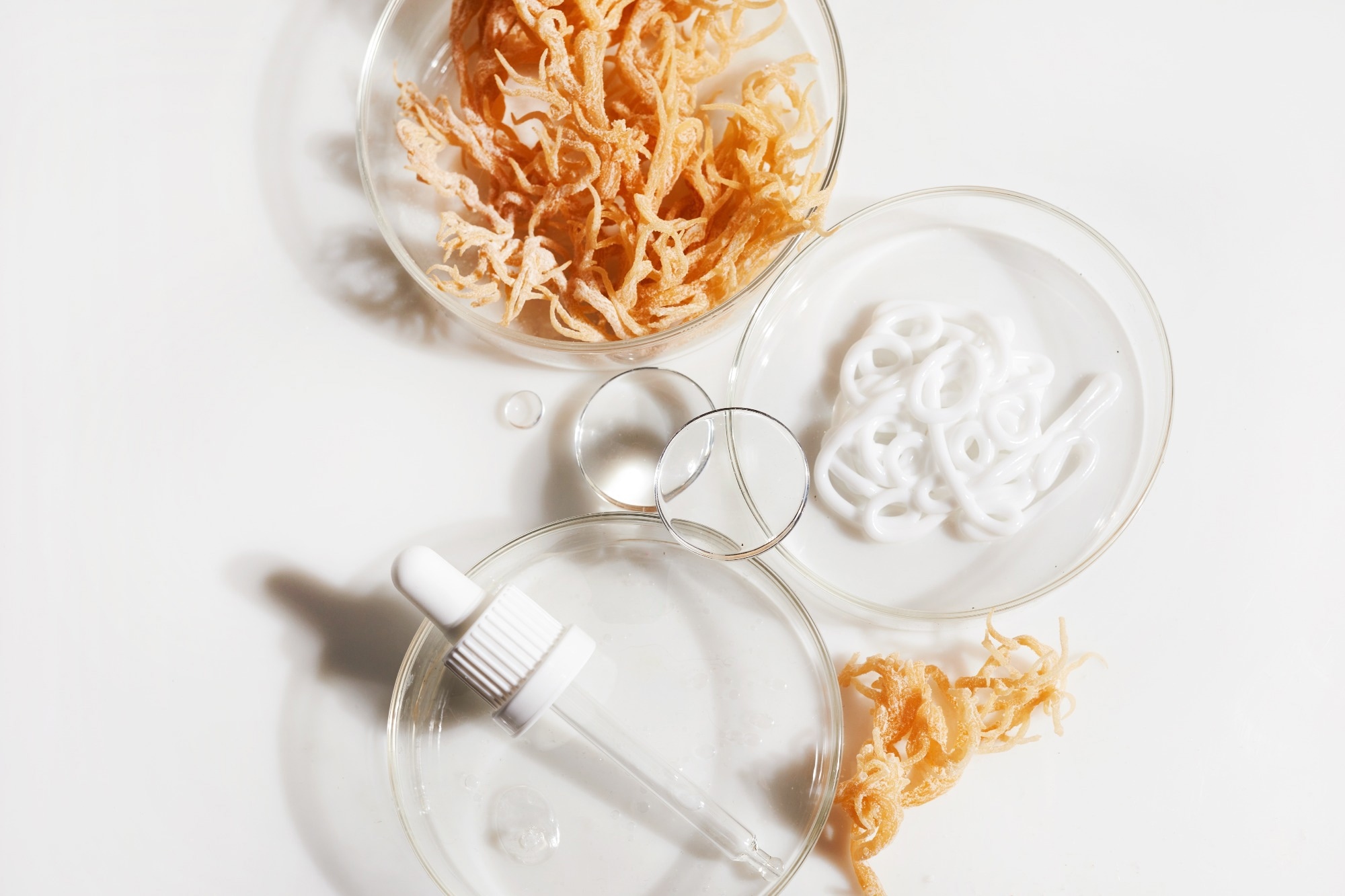Introduction
Nutritional composition of sea moss
Therapeutic potential and mechanisms of action
Clinical evidence and limitations
Sea moss in biomedical and functional food research
Safety, toxicology, and regulatory considerations
Conclusion and future directions
References
Further reading
Once a traditional superfood of the North Atlantic, sea moss is now under the scientific spotlight for its mineral density and gut-friendly fibers, but is it truly a functional food hero, or do safety and quality gaps leave open questions for consumers and clinicians?
 Image Credit: Plateresca / Shutterstock.com
Image Credit: Plateresca / Shutterstock.com
Introduction
Sea moss, which is also known as Chondrus crispus, is a red macroalga that thrives on wave-washed rocks along North Atlantic shores and is traditionally harvested for its carrageenan-rich cell walls. Fueled by social media ambassadors and celebrity endorsements, sea moss powders, gels, and gummies are widely available in wellness markets, promoting the alga as a mineral-dense “superfood” alternative to animal-derived supplements.
Nutritional composition of sea moss
A single dried portion of sea moss provides bioavailable iodine, supporting thyroid hormone production. Sea moss is also rich in numerous minerals, including potassium, calcium, magnesium, and zinc, which are essential for nerve signaling, bone mineralization, and immune defense.2
Approximately one-third of sea moss’s dry weight is carrageenan, a linear sulfated galactan that thickens when hydrated. In addition to carrageenan, the alga concentrates other sulfated polysaccharides, phenolic acids, flavonoids, and small bioactive peptides. 2
These complex carbohydrates resist digestion in the small intestine, which allows for their intact delivery to the colon, where commensal microbes ferment these nutrients into short-chain fatty acids (SCFAs). This prebiotic process increases microbial diversity while also improving metabolic and inflammatory profiles.
Together with the mineral matrix, vitamins, carrageenan, and complementary bioactives, sea moss is a nutrient-dense and functional ingredient in balanced diets. Sea moss supports thyroid balance, electrolyte homeostasis, gut integrity, and overall resilience, particularly in populations with plant-based nutrient gaps, where micronutrient deficiencies frequently limit wellness and immune resilience.2
Therapeutic potential and mechanisms of action
Gut health and microbiota modulation
Sea moss provides soluble fibers, primarily carrageenan, alginate, and laminarin, that reach the colon intact. Simulated fermentations with human fecal inocula suggest that these polysaccharides act as prebiotics, increasing Bacteroides, Bifidobacteria, and Lactobacillus counts, while also supporting SCFA production. SCFAs nourish colonocytes, thereby reinforcing the mucous barrier to potentially modulate systemic lipid and glucose metabolism.2,3
Anti-inflammatory and immunomodulatory effects
Iota-carrageenan has been shown to reverse systolic hypertension, visceral fat accumulation, and circulating cytokines in a rat model of diet-induced metabolic syndrome. Kappa-carrageenan (κ-carrageenan), however, exhibits a size-dependent duality, as highly polymerized chains reduce inflammatory signalling, whereas low-molecular-weight fragments can aggravate inflammation. Therefore, careful control of molecular weight is crucial to harness anti-inflammatory benefits while avoiding pro-inflammatory responses.3
Thyroid health
Chondrus crispus is naturally rich in iodine, an essential cofactor for thyroxine synthesis. Dialysability assays suggest that about 40% of algal iodine becomes bioaccessible, which exemplifies its efficient uptake.
A small human trial using Palmaria-enriched bread found that very high iodine intake produces mild pro-inflammatory signals without causing overt thyroid dysfunction, which underscores the need to remain below the adult upper limit of 1,100 µg/day. When portion sizes are moderated, sea moss can safely fortify diets with bioavailable iodine.2,3
Antiviral, antibacterial, and antioxidant properties
Sulfated sea-moss polysaccharides exhibit broad antiviral activity. In vitro, these active components prevent the attachment of herpes simplex and influenza virions to host cells, while exhibiting concurrent antioxidant and anti-inflammatory effects.
Bromophenols from red algae inhibit the virulence enzymes of Porphyromonas gingivalis and scavenge free radicals, further confirming the antibacterial and antioxidant potential of this plant. These charged polysaccharides have also been shown to inhibit the binding of the severe acute respiratory syndrome coronavirus 2 (SARS-CoV-2) spike protein, which suggests a conserved electrostatic mechanism of viral neutralization.2,3
Amazing Health Benefits of SEA MOSS - Sea Moss GEL - 15 SURPRISING Amazing SEA MOSS Benefits
Clinical evidence and limitations
To date, two small randomized controlled trials (RCTs) have examined Chondrus crispus in humans, each of which enrolled fewer than 60 adults for a total duration of less than 12 weeks. These studies reported modest reductions in fasting glucose levels, improved stool frequency, and slight rises in serum antioxidant capacity. Neither trial adjusted for baseline iodine intake or habitual diet.1,2
Product quality adds further uncertainty, as sea moss harvested near industrial coastlines can accumulate arsenic, cadmium, and lead that exceed World Health Organization (WHO) limits. Few studies have measured heavy-metal load, microbial contamination, or carrageenan subtype, with the absence of standardization preventing dose equivalence and complicating safety assessments.1,2
Regulatory oversight is fragmented, as the United States classifies sea moss as a dietary ingredient, the European Union lists carrageenan as a food additive, and several Asian agencies regulate this plant as traditional medicine. Unified guidelines are essential before broader clinical adoption.1,2
Sea moss in biomedical and functional food research
Sea moss hydrogels, aerogels, beads, and pellets modulate the release of curcumin, sunitinib, antibiotics, or small molecules across pH and magnetic gradients. Comparatively, chitosan/κ-carrageenan nanoparticles prolong the residence time and protect small interfering RNA (siRNA) from enzymatic degradation during gastrointestinal transit.4,5
Spray-dried κ-carrageenan microparticles stabilize coenzyme Q10, whereas lysozyme-κ-carrageenan complexes prevent curcumin oxidation. Both formulations have survived simulated digestion to enhance oral uptake.
Ultrathin κ-carrageenan/chitosan hydrogel films offer a combination of toughness, cell anti-adhesion properties, and 80-120% elongation, making them effective in protecting diabetic wounds. Comparatively, silver or zinc oxide nanofillers add broad-spectrum antimicrobial action.4,5
Within functional foods, soluble carrageenan fibers fortify plant-based meats, dairy replacements, and beverages by supplying iodine and prebiotic sulfated oligosaccharides that can alter the microbiota. Pilot metabolomic studies have also aligned carrageenan-enriched smoothies with lipid profiles in an effort to devise personalized nutrition therapies targeting obesity, cholesterol control, and immune modulation in clinical cohorts.4,5
Safety, toxicology, and regulatory considerations
Seaweed safety is dependent on iodine content, carrageenan molecular form, heavy metal accumulation, and regulatory oversight. Brown kelps, such as kombu, can supply 20-50 mg of iodine from 15-30 g of dried blades, which can suppress thyroid function.
Food-grade, undegraded carrageenan remains an approved stabilizer; however, degraded fragments induce colonic ulceration, pro-inflammatory signaling, and insulin resistance in rodents. The EU currently bans carrageenan in infant formula, whereas the U.S. allows only the high-molecular form and continues to review safety data.6
Macroalgae accumulate arsenic, cadmium, and lead, whereas brown species generally concentrate more than red or green taxa. Site, season, and upwelling can also influence heavy metal contamination, as Pyropia from Argentina contains higher levels of cadmium and arsenic, whereas neighboring Ulva accumulates greater amounts of lead and nickel. Processing that removes surface-bound particles can further reduce heavy metal exposure; however, standardized bioaccessibility tests are still lacking.
The U.S. Food and Drug Administration (FDA) currently considers algae and carrageenan as “generally recognized as safe.” Asian authorities market seaweeds as food but monitor products from China, Japan, and Korea against the WHO's provisional tolerable intake levels.6
 Image Credit: vetre / Shutterstock.com
Image Credit: vetre / Shutterstock.com
Conclusion and future directions
Future research should prioritize well-powered, placebo-controlled human studies that define optimal dose ranges, verify iodine bioavailability, and monitor safety endpoints, such as thyroid function and heavy metal exposure. Parallel efforts should create unified manufacturing standards that specify species, harvest region, processing methods, and carrageenan profile to ensure consistent and traceable consumer products across global markets.
References
- Park, S. J., Sharma, A., & Lee, H. J. (2024). An Update on the Chemical Constituents and Biological Properties of Selected Species of an Underpinned Genus of Red Algae: Chondrus. Marine Drugs, 22(1), 47. DOI: 10.3390/md22010047, https://www.mdpi.com/1660-3397/22/1/47
- Lomartire, S., Marques, J. C., & Gonçalves, A. M. (2021). An overview to the health benefits of seaweeds consumption. Marine Drugs, 19(6), 341. DOI:10.3390/md19060341, https://www.mdpi.com/1660-3397/19/6/341
- Shannon, E., Conlon, M., & Hayes, M. (2021). Seaweed components as potential modulators of the gut microbiota. Marine Drugs, 19(7), 358. DOI:10.3390/md19070358, https://www.mdpi.com/1660-3397/19/7/358
- Pacheco-Quito, E. M., Ruiz-Caro, R., & Veiga, M. D. (2020). Carrageenan: drug delivery systems and other biomedical applications. Marine Drugs, 18(11), 583. DOI:10.3390/md18110583, https://www.mdpi.com/1660-3397/18/11/583
- Kalsi, G., Hazarika, U., Baruah, L. D., Bordoloi, P. L., & Gogoi, M. (2025). Comprehensive review of carrageenan’s multifaceted role in health and food systems. Discover Food, 5(1), 115. DOI:10.1007/s44187-025-00405-7, https://link.springer.com/article/10.1007/s44187-025-00405-7
- Wells, M.L., Potin, P., Craigie, J.S., Raven, J.A., Merchant, S.S., Helliwell, K.E., Smith, A.G., Camire, M.E. and Brawley, S.H., 2017. Algae as nutritional and functional food sources: revisiting our understanding. Journal of applied phycology, 29, 949-982. DOI:10.1007/s10811-016-0974-5, https://link.springer.com/article/10.1007/s10811-016-0974-5
Further Reading
Last Updated: Jul 1, 2025